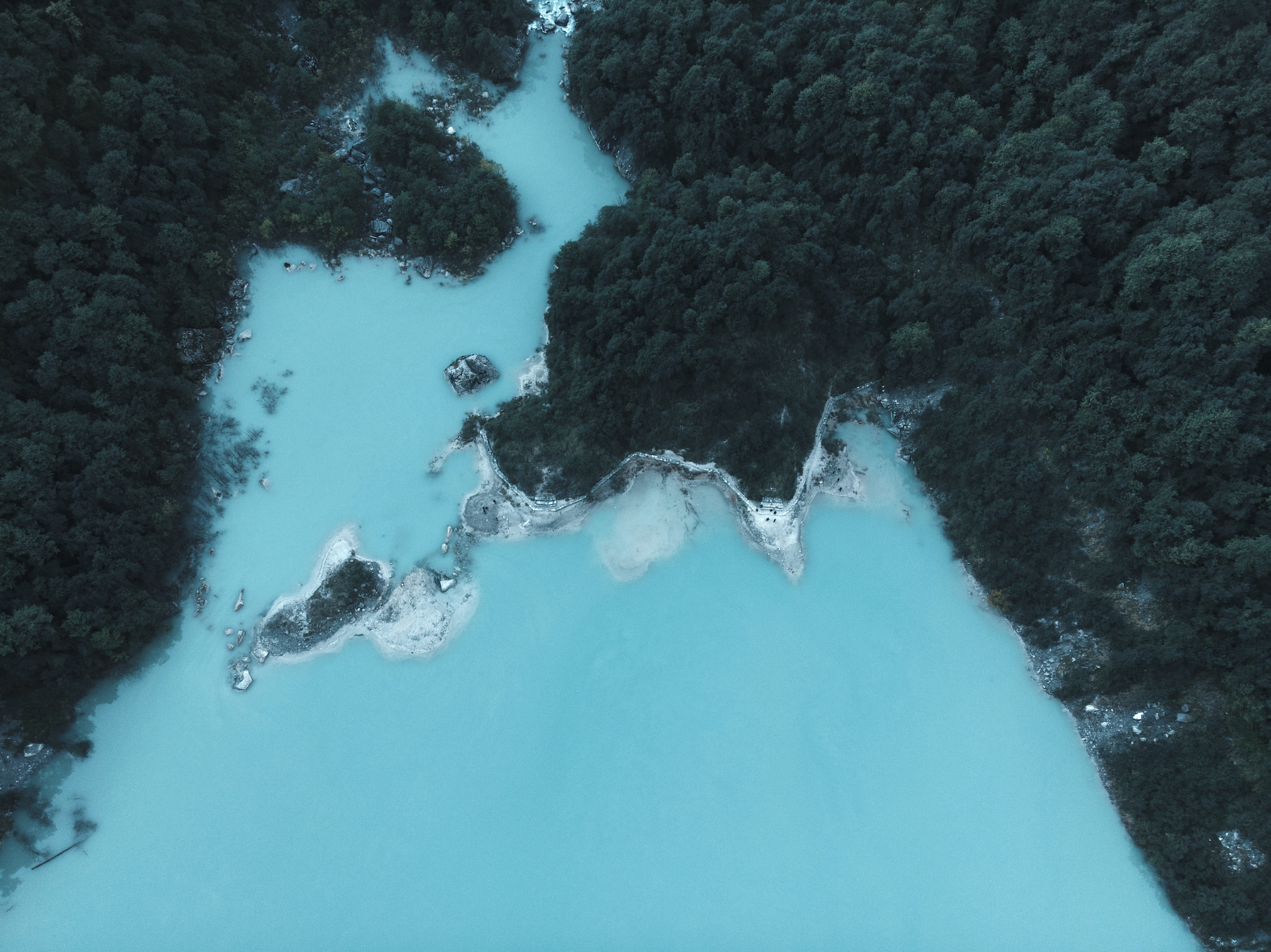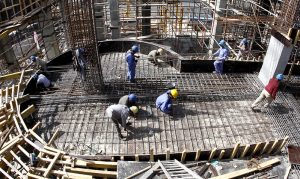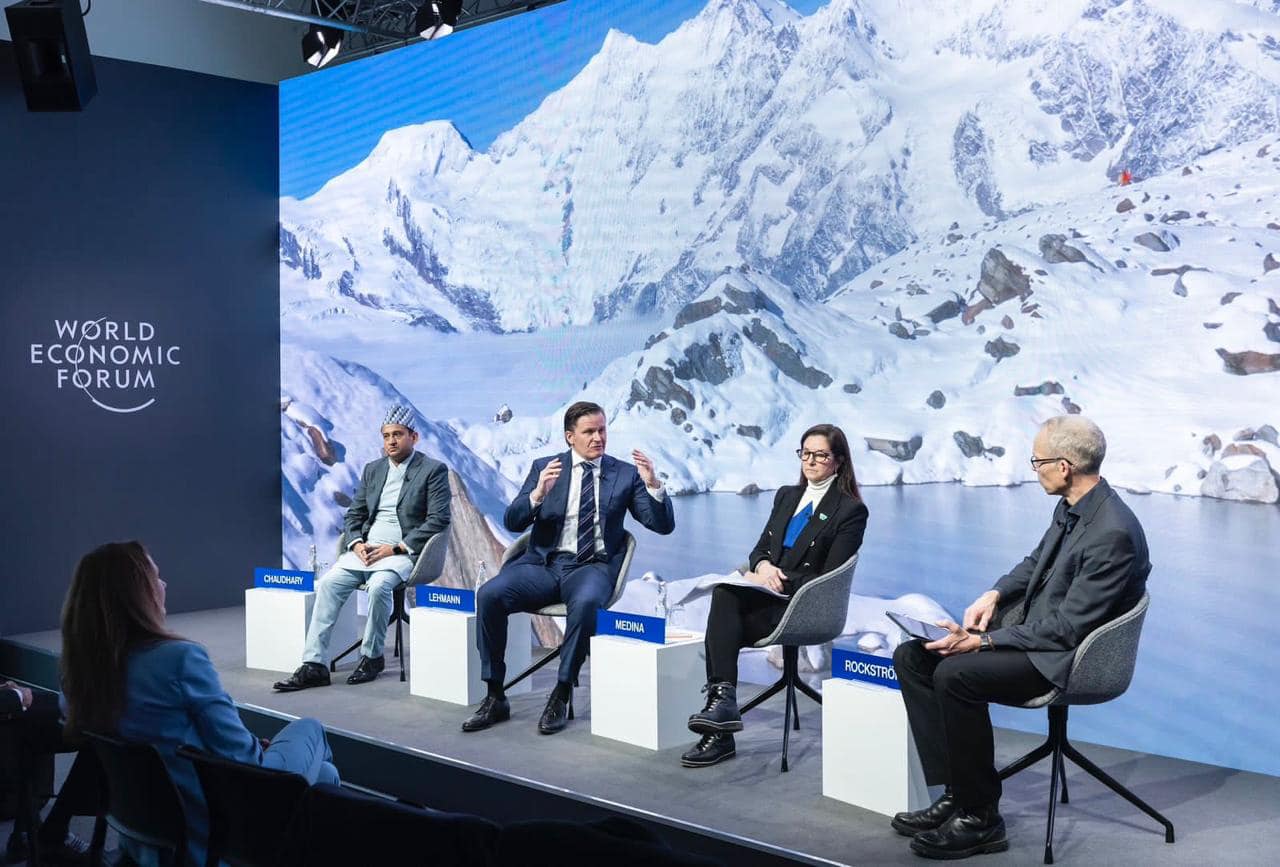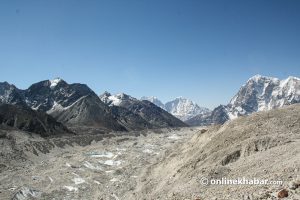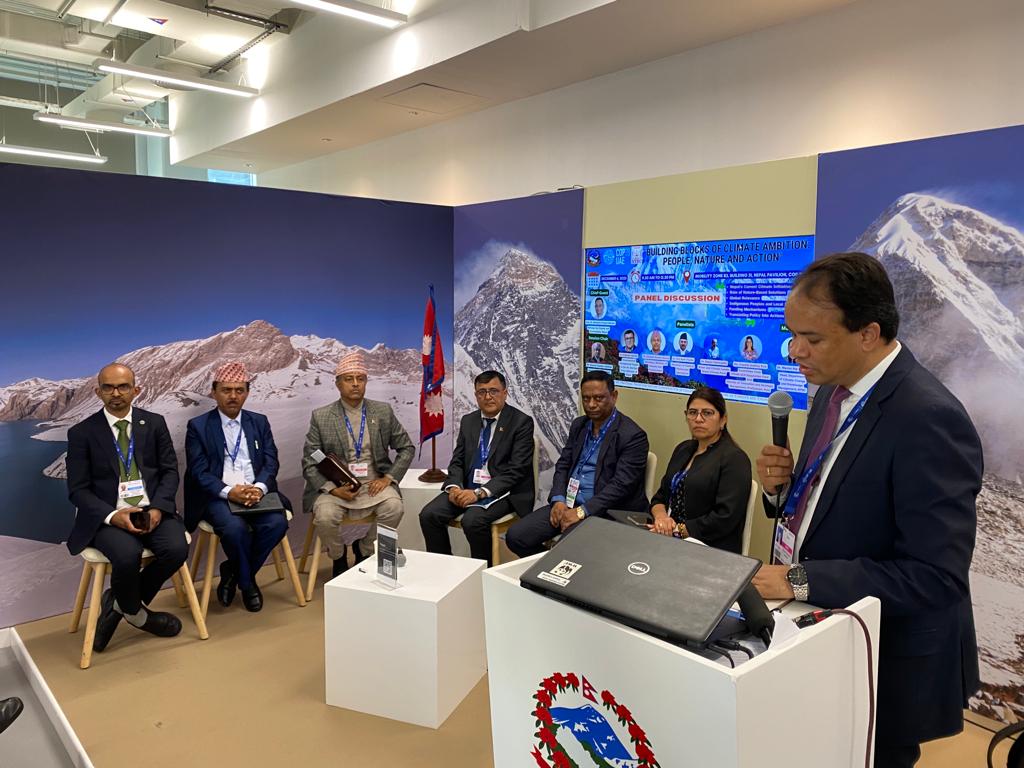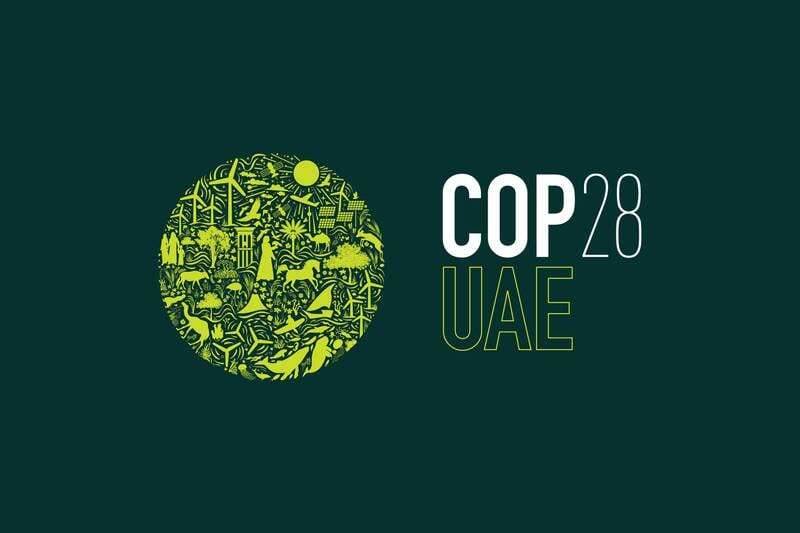Standing in front of Nepal’s lowest glacial lake, I could not help but wonder how global warming affected Nepal’s glaciers and the Himalayas. The Kapuche lake, around two decades ago, was a full-fledged glacier. But, as years went by, due to increasing temperatures, the ice melted creating a turquoise lake and giving rise to yet another trekking destination for both domestic and foreign trekkers.
Kapuche is remote, located at the base of the Annapurnas. The path to the lake is not the easiest. It goes up and down several hills. One has to walk past one jungle after another to get to the lowest glacial lake in the country. There is even a section where a landslide has whipped out an entire section of the jungle, which makes you wonder who was the first to walk this treacherous path and why.
“It was the French who first came here,” said Rudra Gurung, a hotel owner near Kapuche. “They came here to climb Annapurna II.”
As he said that, we heard a huge crack.
“Avalanche,” he said, pointing to the mountain. “This is common here. This place is called Kapuche because of this.”
According to Gurung, Kapuche in his native language means a valley where an avalanche falls. And, in the 12 hours we spent there, we sure saw (and heard) a lot of it.
The road not taken
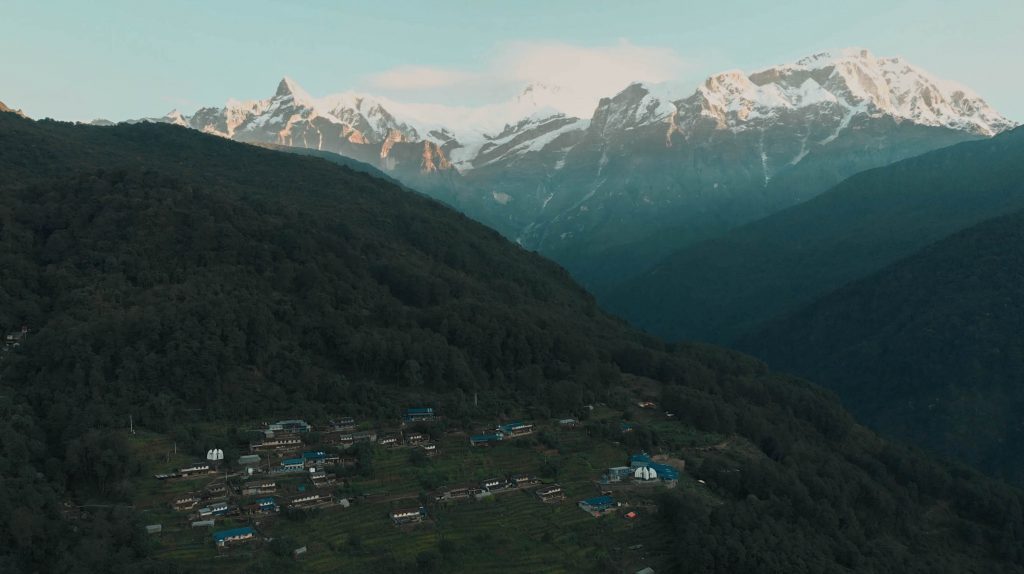
In the autumn of 2021, for my annual trek, I left Kathmandu to go to Mardi Himal. But, fate had another plan as I ended up on a MUV to Sikles, a Gurung village on the lap of the Annapurnas, to trek to the Kapuche lake.
A day before, I had spent the night at Sanu Lake, a little oasis at the Begnas lake where I met photographer Rishav Adhikari, also known as Shutter Pyscho. He urged us to go somewhere, which was not commercial. He suggested a few places around Pokhara, but in the end, we decided that Kapuche would be the best.

After boating and swimming in the lake, we got on a MUV that took us through a treacherous and typical hilly road to a quaint Gurung village.
“The road is always this bad. They say they’ll make it, but no one cares. During the monsoon, we rarely drive,” said our driver.
Normally, he takes around 10 people in his vehicle although it can hold up to eight people maximum. Since no one monitors, he fits as many people as he can when there is demand.
“People even sit on the roof,” he said.
But, we were only six and reached Sikles relatively comfortably.
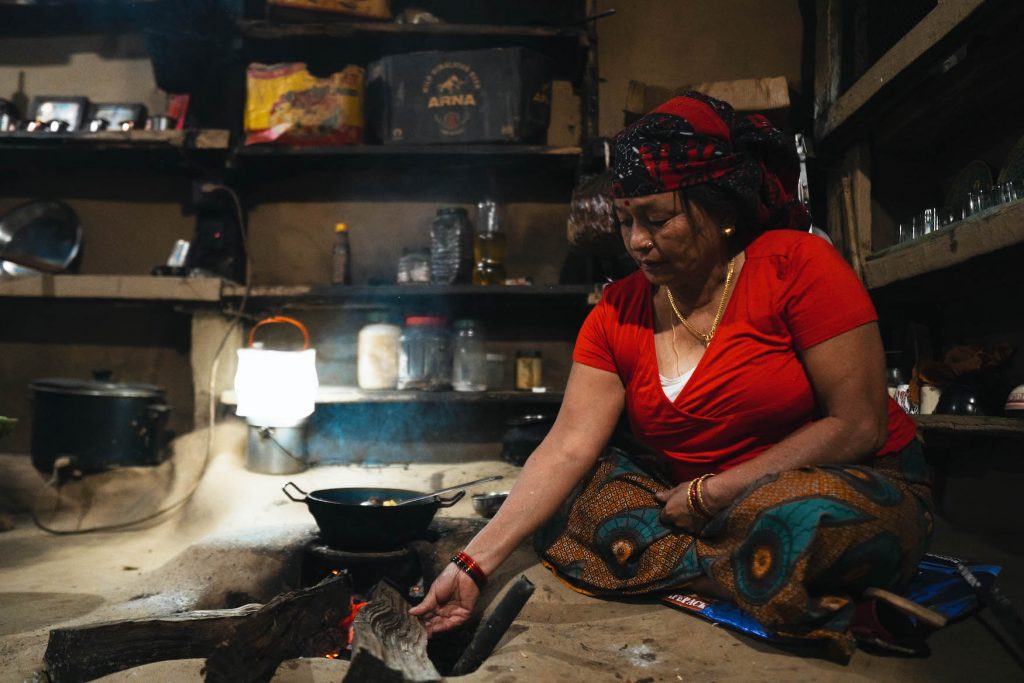
Sikles is like any other Gurung village in the Annapurnas. The people are warm, welcoming and kind. But, that said, they will put you in your place if you behave badly. Despite us reaching the village at around 9 pm, a family still welcomed us and prepared us a warm meal.
It is an ideal place where you can learn a lot about the Gurung lifestyle. While Ghandruk has become far too commercial, Sikles still has a certain rawness about it. The place also has some great views.

Its viewpoint, Rising Danda, an hour’s walk from the village, offers majestic views of the mountains like Annapurna II and Lamjung Himal. The green meadow on top of the hill will make you feel you are somewhere in Europe.
“A lot of people camp there. If you come to Sikles, you have to go there,” insisted Maya Gurung, our host.

The long walk
The next morning, Radha didi called Rudra dai to take us to Kapuche. Rudra dai recently opened a lodge near the lake itself. Looking at our carefree state, he looked agitated. He kept on insisting we needed to start trekking as the route was long but we did not care and took almost two hours to get ready as we left Sikles around 10 am.
Initially, the trail was easy. Facing the mountains, we walked downhill for about an hour, after which we regretted our decision to walk late.

It was midday and the sun was killing us. Climbing a steep hill in that sun was probably the worst decision we made. We were slow, but we made it. Looking at the frustrated face of Rudra dai, we asked him not to wait for us.
“Keep hydrating. Fill your bottles at every water point you see because the journey is a long one and you won’t find a place to eat or rest until Hugugoth,” he said as he told us he would wait for us at the lodge.
The Kapuche trail is probably one of the trickiest I have seen. One moment, you are going downhill; a moment later, you are going through a steep climb. But, that said, I felt free walking to the glacier. The fall colours and the cool breeze were the highlights of the trek. It had been a while since I had walked a jungle trail and this trip reminded me of how beautiful jungles are.

One of the best moments of the trip was the Edi waterfall. Standing on a suspension bridge, watching the waterfall I felt like time stood still. It was here that I was reminded that this was why I trekked. These types of moments cannot be found in the city. This is why I go somewhere new every year. And after a couple of pictures and a few drone shots later, we realised it was getting dark and we had a long way to go.
Pack food or starve
There is one thing that is sad about this trail to Kapuche. There are no teahouses or houses in between. That means you have to reach Hugugoth for tea or food. From the waterfall, the trail is steep until you reach Hugugoth.
By the time we got there, it was around 4 pm and we were both tired and hungry.
“A few boys had set up a place to eat and stay near the waterfall, but they were too lazy. If that tea house was there, it would have been a lot easy for trekkers,” says Maila Gurung of Nasmate Guest House.

Maila dai and his wife prepared us food. Eating that, we started our final two-hour hike to Kapuche.
“Make sure you follow the trail. It is going to be dark so be extra careful,” he said.
Bidding him farewell, we left around 6 pm. The trail from Hugugoth was mostly uphill. We walked mostly through the jungle. For the first hour, we had daylight with us, but soon we had to use headlamps and mobile phones to ensure we were on the right trail.
The final push
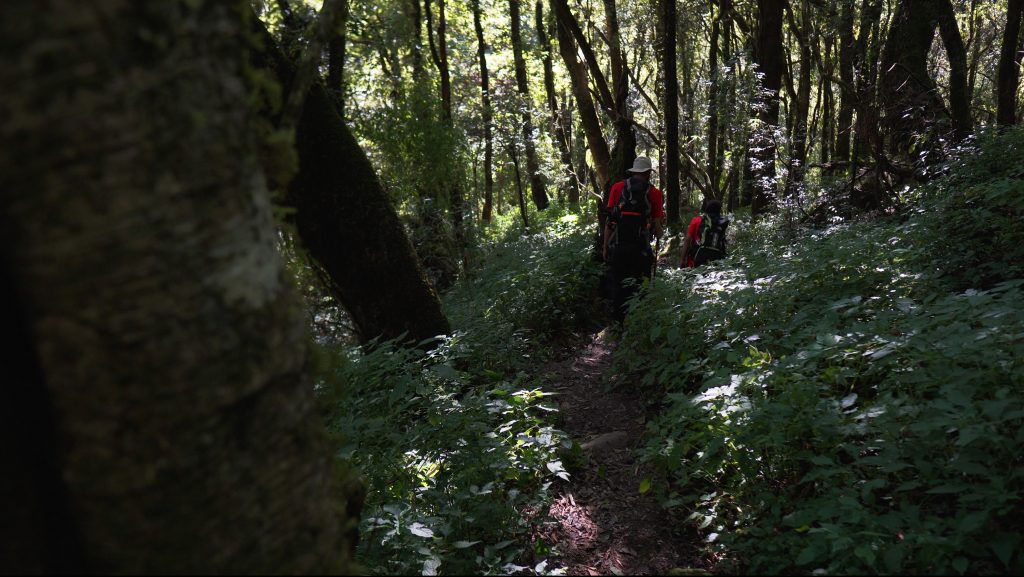
As the clock struck 8 pm, a part of us felt we were lost as we had walked nearly 10 hours, but our destination, Kapuche glacial lake, was nowhere in sight. We had started our trek at 10 am from Sikles and had walked casually the entire day making fun of the signboards that said Kapuche was 10 hours away. But there we were, walking in the dark on the narrow jungle trail knowing one slip would be the end.
The sound of the jungle was bone-chilling. All I could hear was the sound of the river below and those of the insects in the jungle. I was scared. We all were as we wondered if we had taken the wrong trail, but we were wrong.
After 10 hours through a trail that mostly involved walking in the jungle, we made it. People were looking at us with surprise asking us if we were tired. But we were not tired. We were relieved and in a way excited to see the lowest glacial lake in Nepal.
The Kapuche lake

We were the first to get to Kapuche. It was as quiet and fresh. The lake is as clear as it can get. But as I mentioned above, I was in two minds. A part of me was happy I made it there, but another part was thinking about what this lake meant.
Over the past, we have heard about a glacial collapse in many parts of the Himalayas. There is fear among locals that this too will face a similar fate. They understand global warming. They know how the climate is changing. But, they also feel helpless. They know they can do nothing about it. I had a similar feeling as I left the place hoping (and praying) that it does not collapse because it is a place where people should go at least once in their life.



